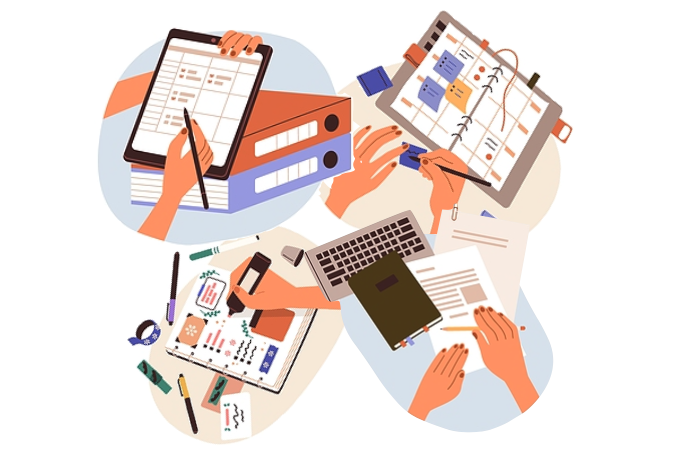You’re a student sitting in class, a consultant in front of a client, an executive in a meeting, an employee at a 3-day seminar… And you take notes. But why? Because you always took notes? Because everyone else does? Because you believe note-taking will help you remember? Here’s an even better question. What are you going to DO with the notes you took — one day later, one month later, or one year later?
Unless you have an efficient process for using your notes, taking them is probably a waste of time. They just pile up, like so much unwashed laundry. If you prefer handwritten notes, ask yourself how many stacks of paper you’ve accumulated that you never looked at again. If you’re an Evernote user, how many notebooks have you filled that are just floating in digital space?
Better Input?
Some people try to solve this problem at the front end, by improving the way they write the notes down. A classic example is Cornell note-taking. This is a format where you first set down headings for the main points or key questions. Then you fill in the details. The idea behind this is right, but the process is upside down. The trouble with Cornell is that it assumes the material is already organized. That’s often not the case. Professors ramble, clients say whatever’s in their heads, seminars are often badly structured. That means you can’t be sure of the key ideas or questions ahead of time.
There’s another problem. With the Cornell method, you’re forcing your mind to manage the material when you should just absorbing it. At the note-taking stage, all your attention should be on listening, not on organizing.
Six Keys to Effective Note-taking
The secret to effective note-taking is simple, but almost never talked about. It’s having a process for organizing your notes AFTER you’ve taken them. Here are six principles that will guarantee a good result:
- Write everything down just as it comes: DON’T try to organize at the time of input.
- Keep each note as short as possible: think in bullet-points, not paragraphs.
- Once all your notes are complete (and not before), categorize them.
- Let the categories EMERGE from the notes: don’t use pre-set categories.
- After you’ve categorized your notes, sequence the categories.
- As a final step, name the one most essential concept — the Big Idea.
The Active Advantage
Step 3, categorizing, is the centerpiece. This is where your brain switches from passive mode to active. When you’re actually taking the notes, you’re just copying the ideas you are hearing or seeing. When you categorize, you have to think! You’re asking yourself, “What kind of thing is this?” or “What bucket should this go in?” That mental activity will get you engaged with the material in a whole new way, and it will help you remember far more than just writing the notes can ever do.
Sequencing is also an active step. You don’t blindly accept the order the material came in. You create the sequence that makes most sense to you. That requires you to think again! You ask yourself, “What comes before what?” or “How does one key idea lead to another?” or “What’s the ‘story’ here?”
Tools to Help
To implement this process, you can use many tools including Excel, Google Sheets or Word tables. The fastest and most efficient way to implement the six principles is Braincat, because it’s designed specifically for this process.
Good note-taking doesn’t finish when you step away from the class or meeting or website. That’s when the real action begins. If you can master a process for using your notes, as opposed to just taking them, you’ll tremendously improve your recall, your productivity, and your creative output.
